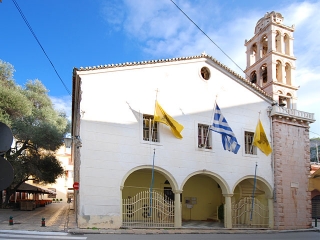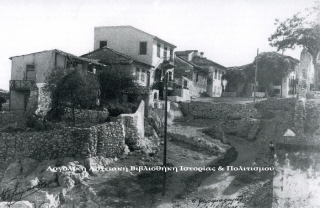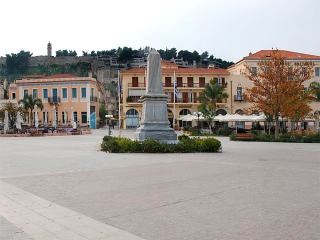
Philellinon Square
An obelisk was erected in 1903 in the centre of the square in honor of the French Philhellenes (Maison, Fabvier and De Rigny) who fell during the Greek Independence war. Their names are found in the inscription on the base of the monument.
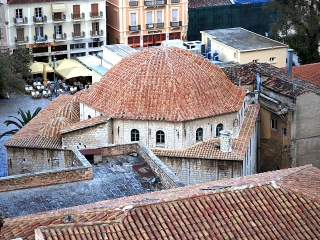
Vouleftiko - “Parliament”
Built around 1730, it was originally used as a mosque and is characteristic for late Ottoman architecture. After the end of the Greek Independence war it housed the Greek Parliament (1825-1826). It is currently a conference hall. The Art Gallery of the Municipality of Nafplio is housed on the ground floor.
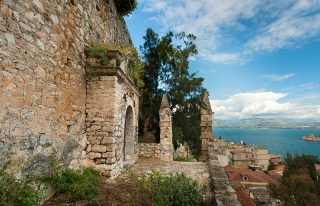
Sagredo Gate
It dates from 1713 and allowed easy access from the Acronafplia castle to the town.
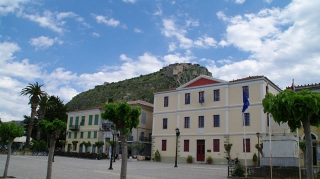
Trion Navarchon Square (Three Admirals Square)
It is dedicated to the three Admirals (Codrington, De Rigny and Heiden) who devastated the Turkish-Egyptian fleet in the sea-battle of Navarone in 1826. In the centre of the square is the burial monument of Demetrius Ypsilantis, one of the leading figures in the Greek Independence war. On the west side of the square is the bronze statue of Otto von Wittelsbach, the first king of Greece.
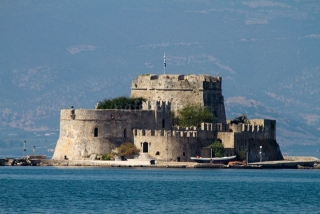
Bourtzi
Built in 1473, it served as a fortress until 1865. It became the residence of the executioners who carried out the death sentences in Palamidi prison. In 1935 it was converted into a hotel. Today there are regular boat-trips to the island.
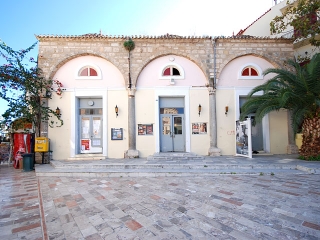
Trianon
It is the oldest mosque in the city, probably from the end of the 16th century.
In the years of the 2nd Venetian Occupation it was converted into a catholic church. From 1828 until 1833 it housed a school and later it was used as a theatre and a cinema called "Trianon". Today it houses the Municipal Theatre of Nafplio.
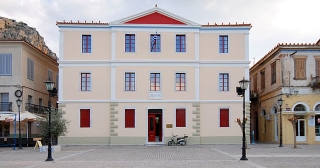
City Hall
A 19th century neo-classical building that housed the first High school of Greece in 1833. It was renovated in 1992 and since then it houses the City Hall.
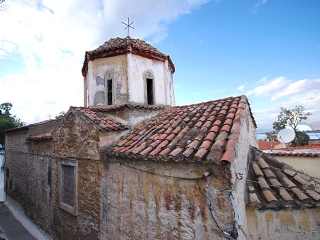
Church of St. Sophia in Nafplion
The Church of Aghia Sophia in Nafplio.
Small domed chapel in the picturesque Psaromachalas neighborhood. It was probably built in Byzantine times. It was the only church within the walls in service from 1780 until the Liberation (1822).
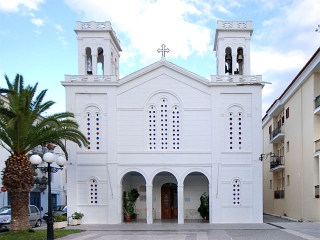
Church of St. Nikolaos
The church for the patron saint of sailors was founded in 1836 and is of Italian influence. The wooden iconostasis, the pulpit, the chandelier and the large icons date from 1848-1849.
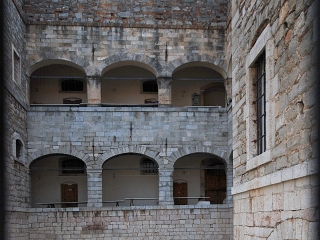
The Turkish Medrese - Leonardo Prison
Dating from late 18th-early 19th century it initially housed a Turkish school. The Prison of Palamidi was transferred here in 1926. Today it houses the restoration workshops and storage of the Archaeological Museum of Nafplio.

